
The Perfect Fat-Burning Barbecue Menu
Mastering the art of alfresco cooking can drastically improve your health and leanness. Grab some tongs and fire up the barbecue!
Warm weather, longer days, flip-flops, and shorts are sure signs that summer's in full swing. Before the fall weather comes, it's a no-brainer to call up friends and family for a few more barbeques.
But if you're trying to watch your weight, you may be hesitant to make those calls. After all, a barbeque equals an enormous spread of food—and, generally, a whole lot of calories. But it doesn't have to be that way.
While overindulging every once in a while isn't going to kill your waistline, knowledge is power. With the right skills, you too can learn how to navigate a grilled summer spread. We've put together this guide to help you serve up a slim-line barbeque without the stress.
Get Leaner Over the Flame
Making it through barbecue season can be rough, since the calories can add up quickly. But with these tips you'll have the tools you need to stay skinny while cooking up a storm.
1. Be choosy on cuts
When you're the host, trim the visible fat and remove skin from meat before preparing. If you're a visitor at someone else's cookout, don't be afraid to ask what cuts of meat they have on hand. If we're talking lean beef, for example, you'd want to opt for sirloin tip and top round before a T-bone steak.
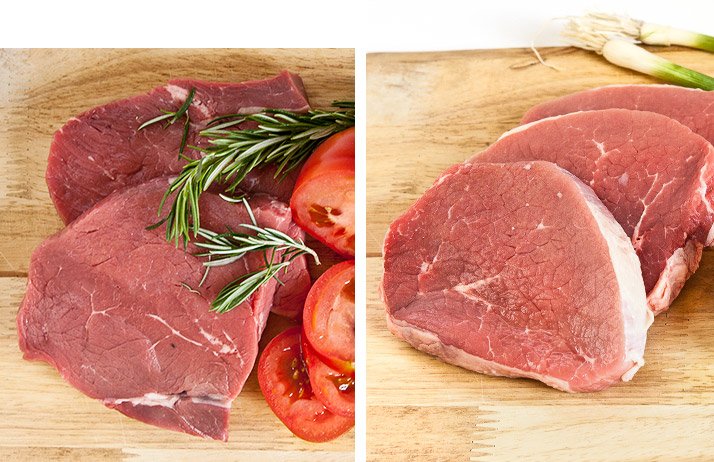
2. Stay hydrated.
We often confused thirst for hunger. Avoid mindless eating by sipping on a fresh drink, like some citrus-infused water. Better yet, bring a pitcher for the entire party.
3. Use portion control.
Portion control is critical when eating at events or gatherings. When faced with a plethora of food options—especially those that are easy to snack on—be conscious to eat slowly; and eat only until you're satisfied, not stuffed. That way, you can still have some energy left to play after you eat, too.
4. Balance your macros.
Prepare and choose well-balanced options, including protein (meats), carbohydrates (potatoes, black beans), fats (avocado), and plenty of veggies. All macronutrients play an important role in proper nutrition.
5. Plan ahead.
If you know you'll be at the barbecue for a while, bring a small snack to keep you from continually returning to the dessert table. Better yet, bring a ball to throw or kick around. Tossing a ball around will not only pull you away from the chips and salsa, it will also help you burn off the extra calories.
Master the Meat
The focus of outdoor cookouts has always been, and will always be, the meat that's on the coals. And why not? Aside from the taste, research in The American Journal of Clinical Nutrition found that, gram for gram, lean proteins help you feel fuller than fats or carbohydrates, meaning they could help with your weight-loss goals.1
But that doesn't mean you have to be stuck chowing down on a dry burger that demands a gallon of water to chase it down. In fact, lean meat can be tender, tasty, and low in calories—especially when grilling using marinades that add moisture and flavor.
Trouble is, there are so many choices that it can be tricky to keep different cuts of meat straight. Here's a guide for choosing the best lean cuts for your taste buds and bikini.
Beef
Meats labeled as chuck, round, and loin are typically the leanest options, and they're among the lowest in saturated fat. "Top sirloin steak is a very versatile cut of meat that is not only a lean cut of steak but also very flavorful," explains fitness nutrition coach Jasmine Schmalhaus, author of five healthy-eating e-cookbooks. "It can be prepared in a variety of ways, like grilled, broiled, or in stew."
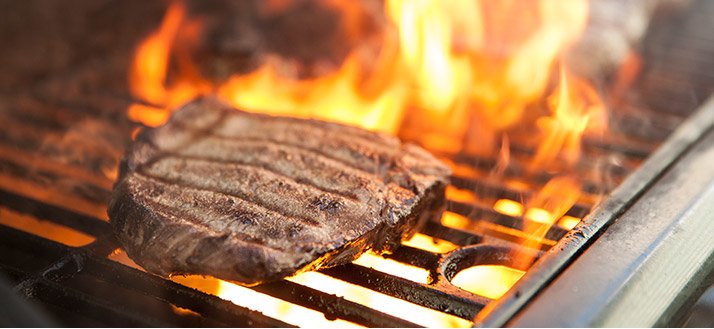
Chicken
Boneless, skinless chicken breasts and ground chicken breasts are going to be your leanest choices, with skinless thighs coming in as the second-leanest option. "Boneless skinless chicken breasts are a great source of lean protein and work well with many different flavor profiles and flavoring methods," Schmalhaus says. Try chicken with cayenne rub, a bit of cilantro, or lemon infusion.
Pork
"Pork-loin chops are a popular and lean option," says Schmalhaus. "They're the most flavorful and tender cut, and are great for marinating." When shopping, you'll notice that there are bone-in or boneless options. Before you hit the check-out line, keep in mind that bone-in chops tend to be moister than the boneless cuts, but they also take longer to cook.
Fish
Salmon and tuna fillets are excellent healthy options for your barbecue. They both have great flavor, and their thick cuts grill without crumbling, unlike flakier fish such as halibut or tilapia. "Don't forget that you can also grill other seafood, like shrimp and scallops," Schmalhaus says. "Simply put them on a grill basket or stack them on skewers."
Some Like It Hot
You could try and judge by eye or touch whether your fare is cooked through, but this is a skill that takes time to learn. Until you've learned it, it can be risky business. "It's better to be safe than sorry," Schmalhaus says. "Instead of guessing, use an inexpensive thermometer to test your meat and ensure food safety. The internal temperature needs to be high enough to eliminate harmful bacteria."
Below are the temperatures you need to know so that your guest can fondly look back and remember how much fun they had at your barbeque instead of thinking about how sick they got.
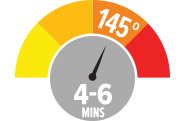
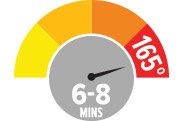
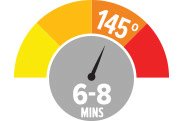
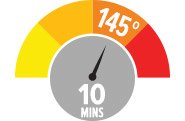
Beef
"Grill time for a steak can vary depending on desired doneness. 4-6 minutes per side for a one-inch cut is a good guide," Schmalhaus says. According to the United States Department of Agriculture (USDA), a safe inside temperature for ground beef is 160 degrees Fahrenheit, and medium-rare steaks should reach 145 degrees Fahrenheit.
Chicken
Cooking time for chicken will also vary depending on the size and thickness of meat. "Boneless, skinless breasts can typically cook in 6-8 minutes per side, ensuring adequate internal temperature is reached," Schmalhaus says. The USDA advises all poultry—like breasts, thighs and ground chicken—reach 165 degrees Fahrenheit.
Pork
According to Schmalhaus, a good rule of thumb for pork is 4 minutes per side for thin cuts and 6-8 minutes per side for thicker cuts. Whatever the size, the inside of pork should hit 145 degrees Fahrenheit, according to the USDA.
Fish
While there is no internal temperature requirement for fish, NSF International recommends cooking fish to 145 degrees Fahrenheit. "Fish is the one exception to being able to tell when it's done based off its appearance," Schmalhaus says. "It will appear semi-opaque when done and usually takes less than 10 minutes to cook."
Find Your Good Side
Serving side dishes at a barbecue is a great way to showcase your creativity and offer many different flavors profiles that highlight the entrée. Sound complex? It doesn't have to be.
There's no need to overwhelm yourself with complicated recipes! Keep your side simple and your stress levels low. Many foods are appealing on their own, or with just a quick hint flavor. "Aim to avoid side dishes that have a heavy-cream base, like the traditional potato and macaroni salads that pack a ton of calories and fats," Schmalhaus recommends. These are her recommendations for quick sides that use fresh ingredients and are certain to please any crowd:
- Watermelon drizzled with balsamic dressing
- Grilled bell peppers
- Grilled corn
- Fresh cucumber and tomato salad with red wine vinegar
- Asparagus with coconut oil and black pepper
References
- Paddon-Jones, D., Westman, E., Mattes, R. D., Wolfe, R. R., Astrup, A., & Westerterp-Plantenga, M. (2008). Protein, weight management, and satiety. The American Journal of Clinical Nutrition, 87(5), 1558S-1561S.

